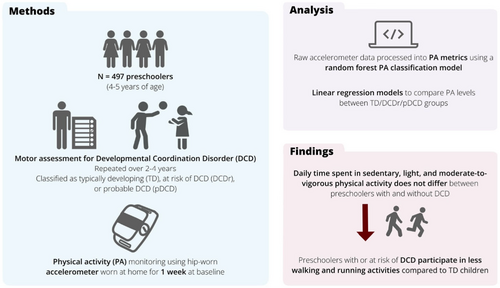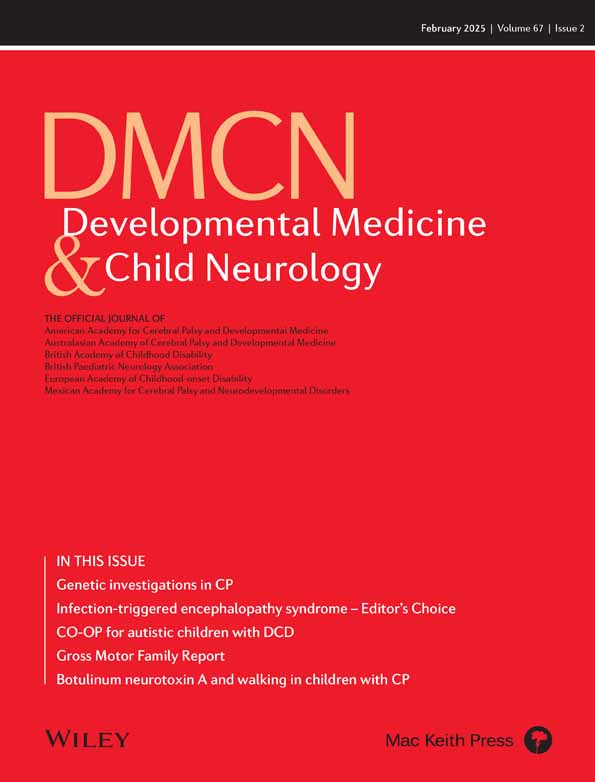Machine learning derived physical activity in preschool children with developmental coordination disorder
Developmental coordination disorder (DCD) is a condition where children have a harder time developing motor skills (e.g. balancing, catching). It is known that school-aged children with DCD get less physical activity than their peers. What isn't known is if this starts even earlier in preschool-aged children. The goal of this study was to compare the physical activity of preschoolers with typical motor development to those with probable DCD (pDCD) and those at risk for DCD (DCDr).
To test this, 497 preschoolers (4–5 years) joined the Coordination and Activity Tracking in CHildren study. They had repeated motor tests and wore an activity monitor for 1 week. Using the activity monitor, the authors looked at their physical activity using a machine learning tool. From the tool, they could tell how much time the children spent being sedentary (e.g. sitting, lying), doing light physical activity (e.g. floor games), doing moderate-to-vigorous physical activity (e.g. running, hopping), walking, and running.
The authors found that preschoolers with and without motor impairment spent the same amount of time each day in sedentary, light, and moderate-to-vigorous physical activity. However, preschoolers with motor impairment (pDCD and DCDr) spent less time walking and running.





